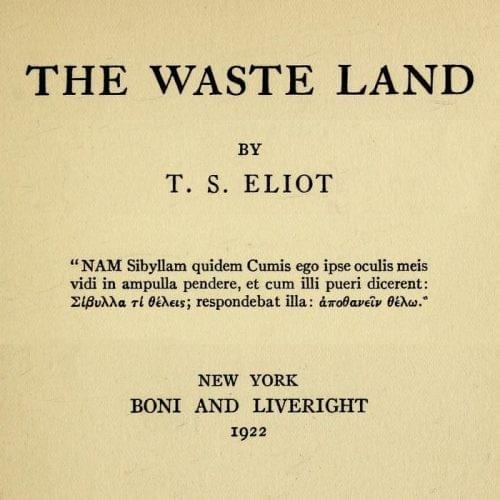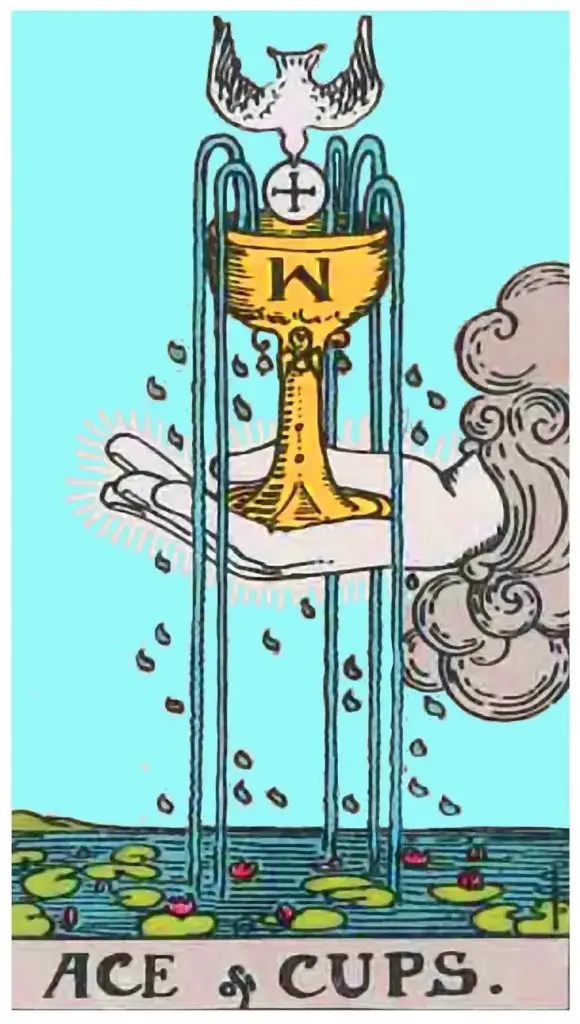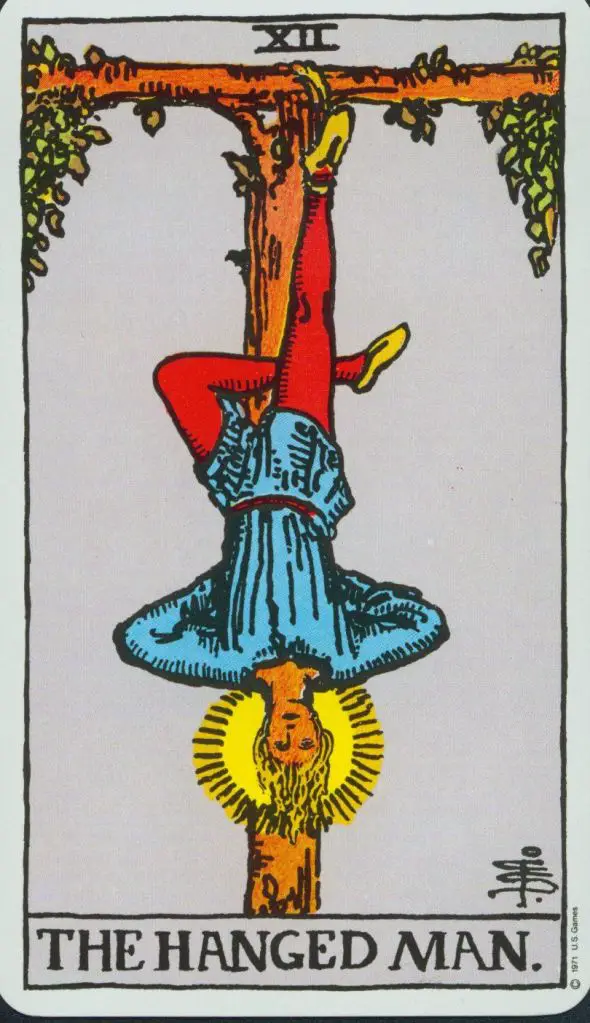On the eve of the centenary of the publication of the Eliotian masterpiece, his devastated land today demonstrates all its relevance and evocative power. Narrative fragments that the reader composes and reassembles in a continuous game of investigation on himself and the world, just like those who walk the Way of the Tarot do: "With these fragments I have propped up my ruins".
di John Bigazzi
Cover: TS Eliot (1888 - 1965)
The Tarot is one of the main interpretations of the Eliotian masterpiece The Waste Land the centenary of which will be celebrated next year. One of the main characters of the poem is the extravagant fortune teller Madame Sosostris which, introduced in verse 43 in the first section of the poem entitled "The burial of the dead" (The Burial of the Dead), is captured by the poetic fragmentation of the work in the act of reading the cards to a consultant. Of these, some are actually part of the traditional deck of gods Tarot of Marseilles, while others are invented. In the note to verse 43 the same TS Eliot explains this point:
“I do not know the exact composition of the Tarot deck and I therefore detached myself from it, to adapt it to my purposes. The hanged man who is part of the traditional deck serves me for two reasons: because it reminds me of Frazer's hanged God, and because I reconnect it with the hooded figure of the episode of the Disciples at Emmaus in the fifth section. The Phoenician Sailor and the Merchant appear further ahead, as does the "long trafficking of people", while the Death by Water takes place in the fourth section. The Man of the three rods, which actually belongs to the Tarot deck, I reconnect completely arbitrarily with the Fisher King himself. "

In the note, Eliot's reference to the work of Jessie L. Weston is clear From Ritual to Romance ("Inquiry into the Holy Grail", Cambridge, 1920), as the author himself admits:
"Not only the title but also the project of this poem and most of the symbols that appear there were suggested by the volume of Miss Jessie L. Weston, From Ritual to Romance, on the legend of the Grail. That book will explain the poem's difficulties far better than my notes, and I owe it enough to recommend it, regardless of the great interest it presents in itself, to anyone who thinks the poem is worth explaining. I also have a general debt to another work of anthropology, The Golden Bough ["The Golden Bough" by James G. Frazer, ed], which has had a profound influence on our generation; I have especially used the two volumes Adonis, Attis, Osiris. Anyone familiar with these works will immediately recognize certain allusions made in the poem to vegetation rites. "
Precisely in the sixth chapter dedicated to the symbols of legend of the Grail, the writer identifies in the cup, in lancia, in sword and in dish, the symbolic objects used in the ancestral rituals of the Indo-European tradition - think, among other things, of the characteristic bell-shaped vase found in the grave goods of the Bell beaker of the Bronze Age - and syncretically survived over the centuries in the shadow of a hostile environment. Elements that we also find in the suits of common playing cards (cup-hearts, plate-diamonds, sword-spades, spear / club-clubs) which of the Tarot are the direct derivation. On this, we leave the floor to Weston:
“But we have further proof that these four objects, in fact, have their own particular cohesion, quite independent of their appearances in folklore or Grail novels: today they exist as the four suits of the Tarot.
Those interested in Grail texts, directing their attention primarily to medieval literature, are likely not familiar with the word Tarot, or awareness of its meaning. Tarot is the name of a deck of cards, seventy-eight in all, of which twenty-two are designated as "Triumphs". "
Of these ancient rituals i Tarocchi hand down to posterity the symbolic code which is linked to a sort of collective memory, a memory that is transmitted from generation to generation. According to the Jungian conception, the Tarot is a philosophical system conveyed by images. For the Swiss psychologist Carl Gustav Jungin fact, some images, concepts and situations are innate in the human mind, or rather derive from a collective unconscious, shared and inherited from the genetic patrimony. Thus the images of the twenty-two Major Arcana describe characters, situations and events, emotions and feelings that belong to every person who has anticipated us in the generations, and therefore each of these cards can be connected to certain and very specific archetypes. Jung said: Celebrities, man has always felt the need to have access to the unconscious to find meaning in his current condition, because there is a sort of correspondence or similarity between the prevailing condition and the so-called collective unconscious.
So here we can better understand this figure of Madame Sosostris who, in The Waste Land , represents the emblem of the social and cultural crisis of Europe, now for Eliot the devastated land, in the perennial conflict between modernism and tradition. A charlatan with an unlikely exotic name, who nevertheless gives us clues on how to get out of this impasse through Tarot reading. Whoever does the reading, in fact, is only one mezzo, the true master being the Tarot itself that speaks directly to the querent, and is speaking by fragments saved, within the Eliotian poem, by the ruins of a rotting society.
In this draft we find some fantasy cards and others that are part of the traditional canon. It starts with the drowned Phoenician sailor with mother-of-pearl eyes; Belladonna the Lady of the Rocks (probably inspired by Leonardo's Virgin of the Rocks); the three of sticks, a minor arcane which is linked to the Fisher King (on the manuscript the note above the text is by Ezra Pound); there Wheel of Fortune, major arcane number ten; the One-eyed merchant; a white paper ... but the fortune teller does not find the Hanged Man.
This is perhaps the most important clue we can draw: the major arcane number twelve is missing from the deck. If we want, we can understand the way of the tarot as the development of an initiatory path whose protagonist is the major arcane number one, the Magician, which we find later, in the middle of his journey, right in the paper ofHanging: arcane that immediately brings to mind mysticism, sacrifice, self-denial.
According to sir Fraser, for the man of the origins the best way to preserve the sacredness of the divine was to place it between heaven and earth, isolating the sacred experience from the influences of ordinary life. A concept that in Nordic myths we can perhaps connect to the symbolism of the hanged man in the tale ofOdin's ritual self-sacrifice contained inHávamal, the Song of the Exalted, which is part of the Eddico songbook, the sacred text of the Norsemen, in verse 138:
“I know, I was hung up
to the trunk whipped by the wind
for nine whole nights,
wounded with a spear
and delivered to Óðinn,
myself to myself,
on that tree
that nobody knows
where you rise from the roots. "
And, again, the hanged man returns to verse 157 of the same poem:
"This I know for twelfth:
if I see on a tree above
a hanged man swinging,
in this way I engrave
and in runes I paint
so that that man walks
and talk to me. "
For the Swiss esotericist Oswald Wirth, who wrote the treatise on the subject The Tarot, the path of alchemical knowledge of the Tarot is divided into two series, each consisting of 11 cards, which respectively begin with Magician e the Hanged Man to symbolize two conditions of human nature: the first constituting the active, Doric, dry and masculine way, the second the passive, ionic, humid and feminine way. At the end of the initiatory path Wirth places the Matto, the only arcane without number, the god traveler with a thousand faces who walks the streets of the world, like Odin himself who is also, at the same time, the Magician and the Hanged Man.

From this perspective, the lack of the Hanged Man from Madame Sosostris' deck would certify the impossibility for the consultant (the reader of the Devastated land) to resolve his moment of crisis and with this that of contemporary civilization of which he is part as a whole, without being able to see things from a different perspective from the mass of people around him, without being able to reach the end of his own personal path and so find the divine dimension. In verse 56 the final outcome of the consultation: "I see a crowd walking in a circle". Here we have the prediction of a loop, of a socio-cultural short-circuit which Western society is still affected more than ever.
This stalemate reminds us of what the medieval tradition of the Grail: namely the fact that the prosperity and fertility of the land of a people is closely related to the health and virility of their own sovereign. If the latter fails, both his land and his people will be spoiled, the girls will be left without love and offspring, the cattle will stop reproducing, the plants now devoid of sap will cease to rise: the reproductive energies of the living kingdom will be suspended.
Only the sacrificial king of the Grail legend, with his ritual self-sacrifice, can bring the Devastated land. But in The Waste Land the Hanged man is missing and, therefore, also the Fisher King, which alone could reawaken new life in the rotting ruins of the devastated West.





2 comments on “TS Eliot's "Devastated Land" and the Way of the Tarot"